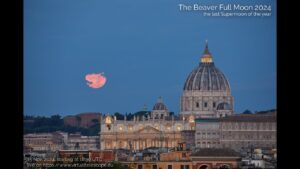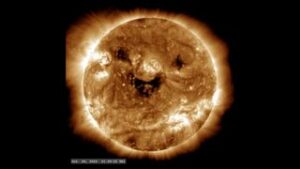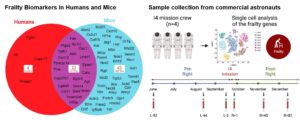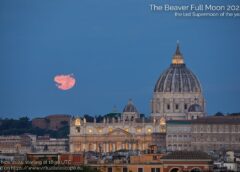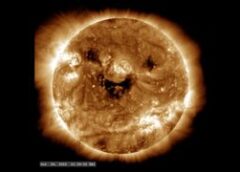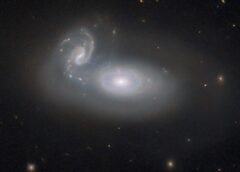5 min read ‘Digital Winglets’ for Real Time Flight Paths Born from NASA Tech Alaska Airlines Captain Bret Peyton looks at route options presented by Traffic Aware Strategic Aircrew Requests (TASAR) during a test of the software at Langley Research Center. The program connects to onboard systems and runs on a tablet called an Electronic Flight Bag. Credit: David Wing Before airplanes even reach the runway, pilots must file a plan to inform air traffic controllers where they’re going and the path they are going to take. When planes are…
Read MoreScience on Station: November 2023
7 min read Science on Station: November 2023 Inspiring Students with Ham Radio, Other Educational Programs As an orbiting microgravity laboratory, the International Space Station hosts experiments from almost every scientific field. It also is home to educational programs to encourage young people worldwide to study science, technology, engineering, and mathematics (STEM). These programs aim to inspire the next generation of space scientists and explorers and experts who can solve problems facing people on Earth. The first and longest running educational outreach program on the space station is ISS Ham…
Read MoreBlack Friday drone deal: Save $99 on this DJI Mini 3 Fly More Combo
Looking for a great Black Friday drone deal? You’re in luck! Amazon is selling the DJI Mini 3 Fly More Combo for $699 in this Black Friday deal — that’s a $99 saving on the usual price. At $699, this is the lowest we’ve seen this drone bundle, as it’s normally $798 (and most recently was on sale for $778, still well above this Black Friday deal). When we reviewed the DJI Mini 3, we thought it was a great affordable option that’ll be perfect for beginners. It has excellent…
Read MoreWhat Is the Artemis Program? (Grades 5-8)
This article is for students grades 5-8. Artemis is NASA’s new lunar exploration program, which includes sending the first woman and first person of color on the Moon. Through the Artemis missions, NASA will use new technology to study the Moon in new and better ways, and prepare for human missions to Mars. Why Is This Program Called Artemis? The first missions to take astronauts to the Moon were called the Apollo Program. In 1961, President John F. Kennedy challenged the nation to land astronauts on the Moon by the…
Read MoreWhat Is the Artemis Program? (Grades K-4)
This article is for students grades K-4. Artemis is a new NASA program to explore the Moon. These missions will land the first woman and first person of color on the Moon. With the Artemis program, NASA will study the Moon in new and better ways. Why Is This Program Called Artemis? The first astronauts landed on the Moon in 1969. The missions were called Apollo. The name Apollo came from stories told by Greek people long ago. In the stories, Apollo was a god. Apollo had a twin sister.…
Read MoreSpaceX set to launch 23 Starlink satellites from Florida tonight
SpaceX plans to launch 23 more Starlink internet satellites to orbit from Florida tonight (Nov. 21), continuing a busy stretch for the company. A SpaceX Falcon 9 rocket is scheduled to lift off from Cape Canaveral Space Force Station during a nearly four-hour window that opens at 11:01 p.m. EDT (0401 GMT on Nov. 22). You can watch the action live via SpaceX’s account on X (formerly known as Twitter), beginning about five minutes before the launch window opens. Related: Starlink satellite train: How to see and track it in…
Read MoreSaSa NASA Partners
2 min read SaSa NASA Partners NASA Langley NASA Langley Aerosol Research Group (LARGE) LARGE specializes in making in situ aerosol and cloud measurements and conducting research to improve understanding of atmospheric aerosols and their interactions with water vapor. LARGE aims to contribute directly to NASA and the Langley Science Directorate goals of translating atmospheric discovery into better solutions to protect the Earth and its people. This is accomplished through investments in people and infrastructure, technology development, and stewardship/dissemination of high-quality data during scientific missions like DISCOVER-AQ and SEAC4RS. To learn…
Read MoreNASA instrument on ISS identifies more than 750 greenhouse gas sources
The more we learn about our climate, the better equipped we become in addressing the factors harming it. So, in July 2022, NASA’s Earth Surface Mineral Dust Source Investigation (EMIT) instrument was launched to map 10 key minerals in some of the world’s most arid regions, and how lofted dust in those areas affects our climate. However, in brand new research, data from the instrument has been used to identify over 750 point-source emissions of greenhouse gases, including sources of methane from landfills, agricultural sites, and oil and gas facilities. …
Read MoreWhat Is a Black Hole? (Grades 5-8)
This article is for students grades 5-8 A black hole is a region in space where the pulling force of gravity is so strong that light is not able to escape. The strong gravity occurs because matter has been pressed into a tiny space. This compression can take place at the end of a star’s life. Some black holes are a result of dying stars. Because no light can escape, black holes are invisible. However, space telescopes with special instruments can help find black holes. They can observe the behavior…
Read MoreWhat Is a Black Hole? (Grades K – 4)
This article is for students grades K-4. A black hole is a place in space where gravity pulls so much that even light can not get out. The gravity is so strong because matter has been squeezed into a tiny space. This can happen when a star is dying. Because no light can get out, people can’t see black holes. They are invisible. Space telescopes with special tools can help find black holes. The special tools can see how stars that are very close to black holes act differently…
Read More